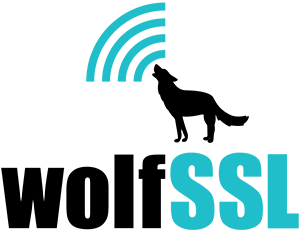In the latest wolfSSL releases, we have added 200+ new API to our OpenSSL compatibility layer. Many of these new API were added for providing support for Apache HTTP Server. We are excited to announce that as of version 4.2.0, wolfSSL now provides support for the Apache web server with the enable option –enable-apachehttpd. This […]
Read MoreMore TagCategory: Uncategorized
wolfSSL Examples Repository
From the early days of the wolfSSL library, we have provided example clients and servers with wolfSSL. These examples have showed how easy it is to use wolfSSL in various configurations. We also use them to help test the library. Over the years we’ve added new features available with TLS to our examples, and our […]
Read MoreMore TagwolfSSL and Application Binary Compatibility
To help out with customers who want to update the wolfSSL library without needing to change their application, wolfSSL Inc is striving to maintain application binary compatibility with a subset of our API. As of wolfSSL v4.3.0, the following functions will be compatible across all releases of wolfSSL moving forward: We have added some testing […]
Read MoreMore TagUpdated Support for Google WebRTC
The wolfSSL team has made sure to improve and update support for various open source projects. This holiday release wolfSSL 4.3.0, we have updated the support for the open source project WebRTC to branch m79 (https://webrtc.org/). This is a project that allows real time communication (RTC) with IoT, mobile and web browsers. Many additional API […]
Read MoreMore TagwolfSSL Version 4.3.0 is Now Available!
The holiday release of wolfSSL, version 4.3, is now available! This release has fantastic new features, optimizations, and bug fixes. Some of the exciting new features that were added to the wolfSSL library are summarized below: The addition of –enable-libwebsockets option for support of libwebsockets build was added in the release! Updated support of NGINX […]
Read MoreMore TagUpdated wolfSSL Support for NGINX
With each release of the wolfSSL embedded SSL/TLS library, new improvements and feature additions are always included. The wolfSSL team has made sure to improve and update support for various open source projects. This holiday release wolfSSL 4.3.0, we are happy to say we have improved our support for Nginx. wolfSSL has updated support for […]
Read MoreMore TagwolfCrypt as an engine for OpenSSL
As many people know, the OpenSSL project is struggling with FIPS, and their new FIPS release is not expected until mid 2021. The version of OpenSSL that supports FIPS is now in End Of Life and is no longer supported. This means that OpenSSL users will not have a supported FIPS Object Module for over […]
Read MoreMore TagXilinx “Zynq UltraScale+ MPSoC’s” Benchmarking with wolfSSL
Benchmark values of the wolfSSL embedded SSL/TLS library running on Xilinx boards, including the ZCU102, have been collected and are up for viewing. Our friends over at Xilinx have a white paper posted that goes into detail about the benchmark values here: https://www.xilinx.com/support/documentation/white_papers/wp512-accel-crypto.pdf. This shows how much faster applications can perform secure operations when incorporating the hardware acceleration […]
Read MoreMore TagDifferences between TLS 1.2 and TLS 1.3 (#TLS13)
wolfSSL’s embedded SSL/TLS library has included support for TLS 1.3 since early releases of the TLS 1.3 draft. Since then, wolfSSL has remained up-to-date with the TLS 1.3 specification. In this post, the major upgrades of TLS 1.3 from TLS 1.2 are outlined below: TLS 1.3 This protocol is defined in RFC 8446. TLS 1.3 […]
Read MoreMore TagwolfSSL Support for DO-178 DAL A
wolfSSL now provides support for complete RTCA DO-178C level A certification! wolfSSL will offer DO-178 wolfCrypt as a commercial off -the-shelf (COTS) solution for connected avionics applications. Adherence to DO-178C level A will be supported through the first wolfCrypt COTS DO-178C certification kit release that includes traceable artifacts for the following encryption algorithms: SHA-256 for […]
Read MoreMore Tag
